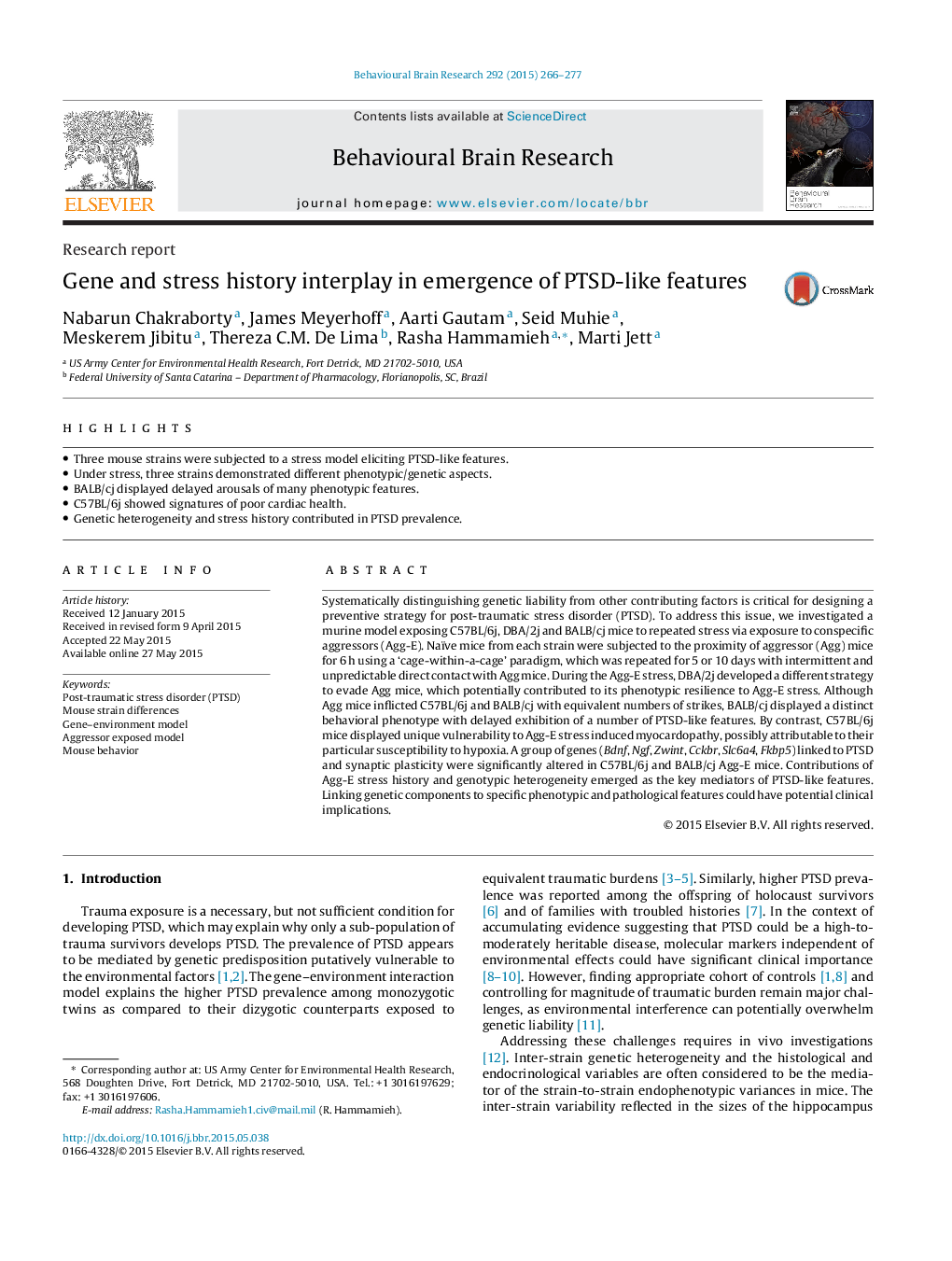| کد مقاله | کد نشریه | سال انتشار | مقاله انگلیسی | نسخه تمام متن |
|---|---|---|---|---|
| 6256511 | 1612940 | 2015 | 12 صفحه PDF | دانلود رایگان |

- Three mouse strains were subjected to a stress model eliciting PTSD-like features.
- Under stress, three strains demonstrated different phenotypic/genetic aspects.
- BALB/cj displayed delayed arousals of many phenotypic features.
- C57BL/6j showed signatures of poor cardiac health.
- Genetic heterogeneity and stress history contributed in PTSD prevalence.
Systematically distinguishing genetic liability from other contributing factors is critical for designing a preventive strategy for post-traumatic stress disorder (PTSD). To address this issue, we investigated a murine model exposing C57BL/6j, DBA/2j and BALB/cj mice to repeated stress via exposure to conspecific aggressors (Agg-E). Naïve mice from each strain were subjected to the proximity of aggressor (Agg) mice for 6Â h using a 'cage-within-a-cage' paradigm, which was repeated for 5 or 10 days with intermittent and unpredictable direct contact with Agg mice. During the Agg-E stress, DBA/2j developed a different strategy to evade Agg mice, which potentially contributed to its phenotypic resilience to Agg-E stress. Although Agg mice inflicted C57BL/6j and BALB/cj with equivalent numbers of strikes, BALB/cj displayed a distinct behavioral phenotype with delayed exhibition of a number of PTSD-like features. By contrast, C57BL/6j mice displayed unique vulnerability to Agg-E stress induced myocardopathy, possibly attributable to their particular susceptibility to hypoxia. A group of genes (Bdnf, Ngf, Zwint, Cckbr, Slc6a4, Fkbp5) linked to PTSD and synaptic plasticity were significantly altered in C57BL/6j and BALB/cj Agg-E mice. Contributions of Agg-E stress history and genotypic heterogeneity emerged as the key mediators of PTSD-like features. Linking genetic components to specific phenotypic and pathological features could have potential clinical implications.
Journal: Behavioural Brain Research - Volume 292, 1 October 2015, Pages 266-277